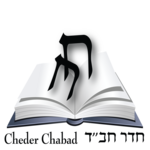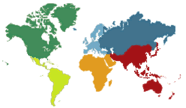Each Passover, Chabad-Lubavitch dispatches hundreds of volunteer rabbinical students to all four corners of the globe to share the holiday joy with Jewish people near and far. Some take multiple flights and various other forms of transportation—from European trains to Nepalese mules—to reach their destinations, while others head just a few miles down the road. All of them though, are there with one goal in mind: to reach out to their fellow Jews and bring them the most beautiful, authentic and enjoyable Passover.
Chabad’s educational arm, Merkos L’Inyonei Chinuch, began sending out rabbinical students to far-flung Jewish communities back in the early 1940s, a sort of Jewish Peace Corps even before the term was invented.
“Merkos Shlichus” as it is known, was primarily a summer program when it began, but by the 1980s, as Israeli backpackers began heading to the Far East and with the flood of Soviet Jewish emigration, it expanded to include bringing the joy of the holidays to distant and underserved Jewish communities. Today, the project is headed by the Merkos 302 office, which this Passover coordinated the logistics of sending over 700 volunteers worldwide. From the sun-kissed beaches of the Caribbean to the mountains of Southeast Asia and the Australian Outback, these dedicated emissaries organized and conducted Passover Seders and connected Jews to their age-old heritage.
“Since the earliest days of his leadership, the Rebbe [Rabbi Menachem M. Schneerson, of righteous memory] held Merkos Shlichus close to his heart—reviewing the students’ reports and caring deeply that every Jew, no matter how far, should feel connected,” said Rabbi Mendy Kotlarksy, director of Merkos 302, which provides resources for Chabad emissaries and organizations worldwide. “Each year, we receive letters from Jews in the most remote places sharing how a visit from two yeshivah students reignited their connection, gave their children a taste of Judaism, or simply reminded them that they’re not alone.”
In the weeks before Passover, and with the far-reaching potential of their work at the top of their minds, the volunteers spread out across the world.

‘This Is Their Second Home’
There has been a Jewish presence in the South American country of Suriname since the 1600s, when many Dutch Jews from Amsterdam settled there and built a thriving community. Their influence was so strong that the capital city was once called “Torarica,” meaning “rich in Torah” in the local language. Over the years, the community drastically shrank, but locals are proud of the fact it is the “oldest Jewish community in the Western Hemisphere.” There are estimated to be only around 50 Jewish people living there year-round.
Rabbinical students Schneur Deren, Avi Winner, Mendel Zakilkowski and Yossi Elberg were dispatched to Suriname, which is tucked between Guyana and French Guiana, where they were warmly welcomed by the historic local Jewish community.
But even just getting there wasn’t simple. The young men had intended to fly to Suriname via the Caribbean island of Curucao, bringing with them 10 pieces of luggage containing shmurah matzah, kosher meat, kosher wine and other necessary items. The initial airline refused to check the Passover goods, so an alternate itinerary was found. This one gave them an overnight stopover scheduled in Trinidad. When Rabbi Avromy Super, director of Chabad of St. Lucia, heard about it, he connected the young rabbis with Nick, the lone Orthodox Jewish living on the island. Together, they marked the Rebbe’s 123rd birthday with a lively Chassidic gathering, perhaps the first in Trinidad’s history, before continuing on their way.
The volunteers conducted two Seders at the community’s historic Maamed Hall. The first night drew around 60 participants, including visitors from the USA, France, and Brazil, and throughout their visit, the volunteers connected with community members, visited the historic Jewish cemetery, and left behind prayer books and Passover Haggadahs to strengthen the community's connection to their heritage.
On St. Lucia, where cruise ships regularly dock bringing tourists and visitors from around the world, there were two volunteers, Mendel Hoexter and Fuli Markel, clad in white shirts and dark pants. In addition to the pristine beaches, gift shops and restaurants welcoming the disembarking passengers, they carried tefillin and shmurah matzah, ready to help Jews celebrate.
One Florida native returning to his cruise ship encountered the young men. Within minutes of meeting, he was wearing tefillin and saying the Shema prayer for the first time in years.
After saying the prayers, his eyes misted over as he told the boys that his late father had put on tefillin every day and that “my father would be proud.”
Meanwhile, Arik Deren and Chaim Goldberg, two American yeshivah students, were sent to Florence, Italy, where they helped Chabad of Tuscany prepare for the overflow crowds it was expecting at each Passover Seder. They were busy at work when they stepped outside to get some supplies and bumped into a political rally underway. They were shocked when they realized that right there, in the center of the city, a rally-participant was holding aloft a portrait of Hitler.
“But then, later that night, on the very same streets of Florence, we were sitting in this beautiful courtyard with Jews from all walks of life, singing Passover songs and celebrating the holiday of our redemption,” Deren told Chabad.org. “The contrast could not be greater.”
Before and during Passover, Deren and Goldberg also visited smaller cities throughout Tuscany distributing shmurah matzah.

But perhaps the most challenging journey was undertaken by Moshe Butman and eleven other American yeshiva students who traveled to the Ukrainian village of Zarichany, outside of Zhitomir. There, they conducted Passover Seders for children and teens at a home for at-risk youth.
Due to the ongoing war and the absence of direct flights into the military-controlled Ukrainian airspace, the journey was not a simple one. Flying from New York to Warsaw, they then had to drive eight hours over the border to their destination. The journey took some 48 hours.
The students came prepared, bringing with them sixteen suitcases packed with games, toys, candy and other treats for children in the war-torn country. The effects of the war were felt, Butman says. “Sirens were a nightly occurrence, and military planes were constantly flying overhead,” he told Chabad.org.
Together with five local Ukrainian Jewish volunteers, the twelve students conducted Seders for around 100 children at the Alumim Children’s Home run by Chabad of Zhitomir, in what was an incredibly emotional scene.
“These children are not from typical homes, and they came from Kyiv to be together for the holiday,” Butman said. “There was a palpable feeling that this is their second home and throughout the Seder, while we were singing local Jewish camp songs, the children were crying. When we dropped the kids off in Kyiv after the holiday, one child whose mother passed away a couple years ago told me he loved me and gave me a big hug.”







Start a Discussion